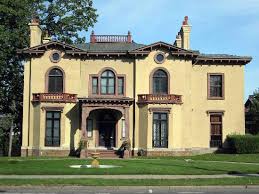Today, as part of Munson’s Museum of Art, Fountain Elms is home to the museum’s decorative arts collection which is comprised, in part, by objects collected by the Williams and Proctors during their lifetimes such as American and European paintings, Asian ceramics, European watches, thimbles, playing cards, souvenir spoons, canes, fans, and autographs.
The period room settings and changing exhibitions in Fountain Elms provide the stylistic, historical, and social contexts for the entire decorative arts collection.
The second floor features open study storage and changing exhibitions, as well as the Pratt Munson Gallery which showcases works by students, faculty, and invited artists.
